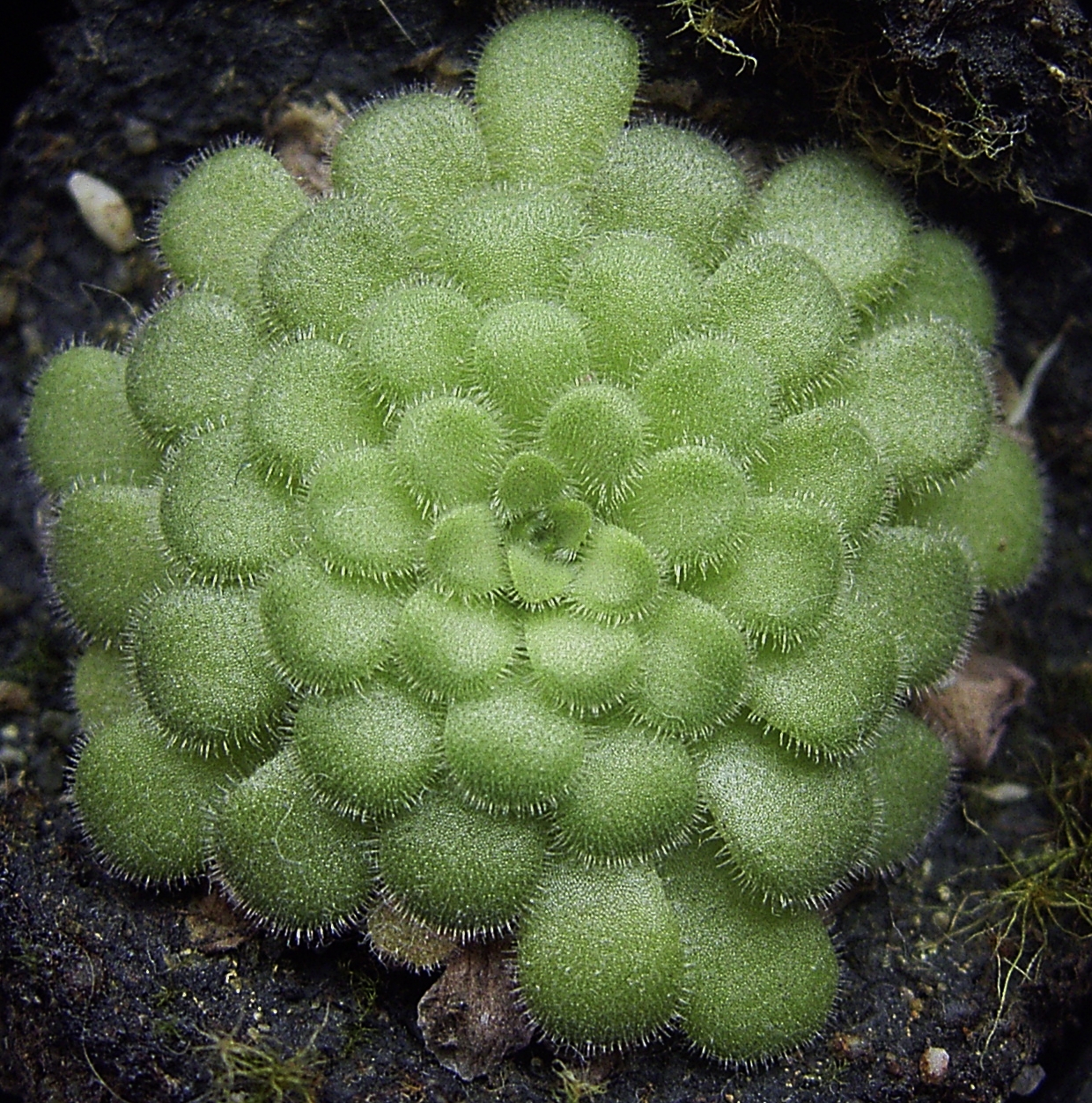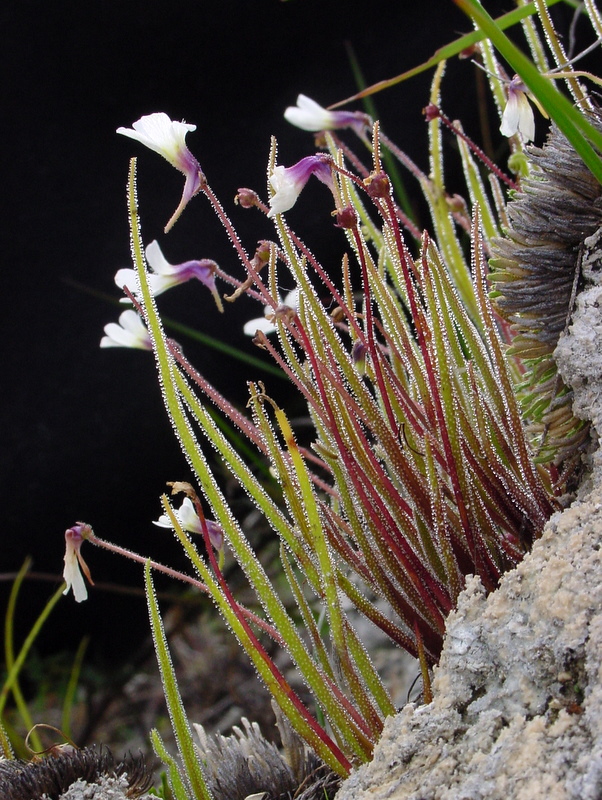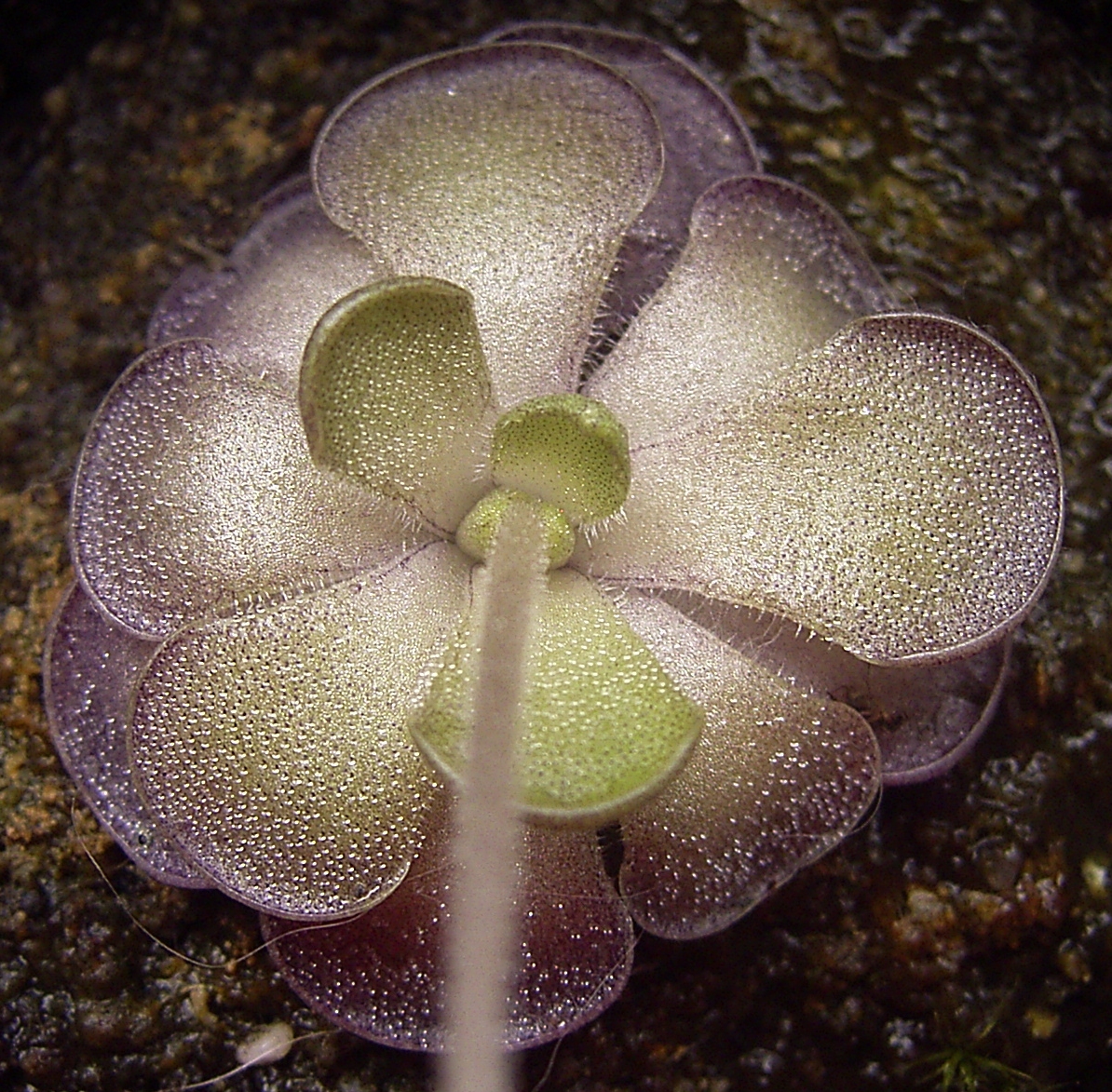|
Pinguicula
''Pinguicula'', commonly known as the butterworts, is a genus of carnivorous flowering plants in the family Lentibulariaceae. They use sticky, glandular leaves to lure, trap, and digest insects in order to supplement the poor mineral nutrition they obtain from the environment. Of the roughly 80 currently known species, 13 are native to Europe, 9 to North America, and some to northern Asia. The largest number of species is in South and Central America. Etymology The name ''Pinguicula'' is derived from a term coined by Conrad Gesner, who in his 1561 work entitled ''Horti Germaniae'' commented on the glistening leaves: ''"propter pinguia et tenera folia…"'' (Latin ''pinguis'', "fat"). The common name "butterwort" reflects this characteristic. Characteristics The majority of ''Pinguicula'' are perennial plants. The only known annuals are ''P. sharpii'', ''P. takakii'', ''P. crenatiloba'', and ''P. pumila''. All species form stemless rosettes. Habitat Butterworts can be ... [...More Info...] [...Related Items...] OR: [Wikipedia] [Google] [Baidu] |
List Of Pinguicula Species
:''This article is a list of the butterworts, the species of the genus Pinguicula. For general information on butterworts, please see the main article on Pinguicula.'' The genus ''Pinguicula'' contains the 83 species of butterworts, belonging to the bladderwort family (Lentibulariaceae). It has a natural distribution across most of the Northern Hemisphere, though over half of the species are concentrated in Mexico and Central America. Siegfried Jost Casper systematically divided them into three subgenera with 15 sections. Subsequent phylogenetic research showed that many of these groupings are polyphyletic, but they are used below. Subgenus ''Isoloba'' Section ''Agnata'' *'' Pinguicula agnata'' *'' Pinguicula albida'' *'' Pinguicula benedicta'' *'' Pinguicula cubensis'' *'' Pinguicula filifolia'' *''Pinguicula gigantea'' *'' Pinguicula infundibuliformis'' *''Pinguicula lithophytica'' *''Pinguicula pilosa'' Section ''Cardiophyllum'' *''Pinguicula crystallina'' ** ... [...More Info...] [...Related Items...] OR: [Wikipedia] [Google] [Baidu] |
Pinguicula Cyclosecta Summer
''Pinguicula'', commonly known as the butterworts, is a genus of carnivorous flowering plants in the family Lentibulariaceae. They use sticky, glandular leaves to lure, trap, and digest insects in order to supplement the poor mineral nutrition they obtain from the environment. Of the roughly 80 currently known species, 13 are native to Europe, 9 to North America, and some to northern Asia. The largest number of species is in South and Central America. Etymology The name ''Pinguicula'' is derived from a term coined by Conrad Gesner, who in his 1561 work entitled ''Horti Germaniae'' commented on the glistening leaves: ''"propter pinguia et tenera folia…"'' (Latin ''pinguis'', "fat"). The common name "butterwort" reflects this characteristic. Characteristics The majority of ''Pinguicula'' are perennial plants. The only known annuals are ''P. sharpii'', ''P. takakii'', ''P. crenatiloba'', and ''P. pumila''. All species form stemless rosettes. Habitat Butterworts can be ... [...More Info...] [...Related Items...] OR: [Wikipedia] [Google] [Baidu] |
Pinguicula Sharpii
''Pinguicula'', commonly known as the butterworts, is a genus of carnivorous flowering plants in the family Lentibulariaceae. They use sticky, glandular leaves to lure, trap, and digest insects in order to supplement the poor mineral nutrition they obtain from the environment. Of the roughly 80 currently known species, 13 are native to Europe, 9 to North America, and some to northern Asia. The largest number of species is in South and Central America. Etymology The name ''Pinguicula'' is derived from a term coined by Conrad Gesner, who in his 1561 work entitled ''Horti Germaniae'' commented on the glistening leaves: ''"propter pinguia et tenera folia…"'' (Latin ''pinguis'', "fat"). The common name "butterwort" reflects this characteristic. Characteristics The majority of ''Pinguicula'' are perennial plants. The only known annuals are ''P. sharpii'', ''P. takakii'', ''P. crenatiloba'', and ''P. pumila''. All species form stemless rosettes. Habitat Butterworts can be ... [...More Info...] [...Related Items...] OR: [Wikipedia] [Google] [Baidu] |
Pinguicula Takakii
''Pinguicula'', commonly known as the butterworts, is a genus of carnivorous flowering plants in the family Lentibulariaceae. They use sticky, glandular leaves to lure, trap, and digest insects in order to supplement the poor mineral nutrition they obtain from the environment. Of the roughly 80 currently known species, 13 are native to Europe, 9 to North America, and some to northern Asia. The largest number of species is in South and Central America. Etymology The name ''Pinguicula'' is derived from a term coined by Conrad Gesner, who in his 1561 work entitled ''Horti Germaniae'' commented on the glistening leaves: ''"propter pinguia et tenera folia…"'' (Latin ''pinguis'', "fat"). The common name "butterwort" reflects this characteristic. Characteristics The majority of ''Pinguicula'' are perennial plants. The only known annuals are ''P. sharpii'', ''P. takakii'', ''P. crenatiloba'', and ''P. pumila''. All species form stemless rosettes. Habitat Butterworts can be ... [...More Info...] [...Related Items...] OR: [Wikipedia] [Google] [Baidu] |
Pinguicula Crenatiloba
''Pinguicula'', commonly known as the butterworts, is a genus of carnivorous flowering plants in the family Lentibulariaceae. They use sticky, glandular leaves to lure, trap, and digest insects in order to supplement the poor mineral nutrition they obtain from the environment. Of the roughly 80 currently known species, 13 are native to Europe, 9 to North America, and some to northern Asia. The largest number of species is in South and Central America. Etymology The name ''Pinguicula'' is derived from a term coined by Conrad Gesner, who in his 1561 work entitled ''Horti Germaniae'' commented on the glistening leaves: ''"propter pinguia et tenera folia…"'' (Latin ''pinguis'', "fat"). The common name "butterwort" reflects this characteristic. Characteristics The majority of ''Pinguicula'' are perennial plants. The only known annuals are ''P. sharpii'', ''P. takakii'', ''P. crenatiloba'', and ''P. pumila''. All species form stemless rosettes. Habitat Butterworts can be ... [...More Info...] [...Related Items...] OR: [Wikipedia] [Google] [Baidu] |
Pinguicula Moranensis
''Pinguicula moranensis'' is a perennial rosette-forming insectivorous herb native to Mexico and Guatemala. A species of butterwort, it forms summer rosettes of flat, succulent leaves up to 10 centimeters (4 in) long, which are covered in mucilaginous (sticky) glands that attract, trap, and digest arthropod prey. Nutrients derived from the prey are used to supplement the nutrient-poor substrate that the plant grows in. In the winter the plant forms a non-carnivorous rosette of small, fleshy leaves that conserves energy while food and moisture supplies are low. Single pink, purple, or violet flowers appear twice a year on upright stalks up to 25 centimeters long. The species was first collected by Humboldt and Bonpland on the outskirts of Mina de Morán in the Sierra de Pachuca of the modern-day Mexican state of Hidalgo on their Latin American expedition of 1799–1804.Zamudio, S. 1999 Based on these collections, Humboldt, Bonpland and Carl Sigismund Kunth ... [...More Info...] [...Related Items...] OR: [Wikipedia] [Google] [Baidu] |
Pinguicula Alpina
''Pinguicula alpina'', also known as the alpine butterwort, is a species of carnivorous plant native to high latitudes and altitudes throughout Eurasia. It is one of the most widespread ''Pinguicula'' species, being found in mountainous regions from Iceland to the Himalayas. Native to cold climates, it is a temperate species, forming prostrate rosettes of green to red leaves and white flowers in the summer and a tight hibernaculum during a period of winter dormancy in the winter. Like all members of the genus, ''P. alpina'' uses mucilaginous glands covering the surface of its summer leaves to attract, trap, and digest arthropod prey. Description ''Pinguicula alpina'' is a small perennial herb, reaching a height of 5–15 cm (2-6 in.) when in flower. The plant is supported by 1–2 cm (0.4-0.8 in) long roots, which are fleshy, yellow-white and branching.Linnee, in Spec. pl. ed. 1 (1753) 17 ''P. alpina'' is the only temperate ''Pinguicula'' which retains these r ... [...More Info...] [...Related Items...] OR: [Wikipedia] [Google] [Baidu] |
Pinguicula Gigantea
''Pinguicula gigantea'' is a tropical species of carnivorous plant in the family Lentibulariaceae. Its native range is within Mexico. ''P. gigantea'''s flower is usually a purple colour with the occasional light blue also seen. ''P. gigantea'' was once classified as ''Pinguicula ayautla''. This ''Pinguicula'' was discovered by Alfred Lau and described by the botanist Hans Luhrs. ''Pinguicula gigantea'' has a few different forms, such as the 'white flower' form or the 'blue flower'. Plant characteristics Habitat ''Pinguicula gigantea'' grows in the Mexican state of Oaxaca at an altitude of 688 meters or 2260 feet. Leaves and carnivory ''Pinguicula gigantea'', unlike most ''Pinguicula'' species, has sticky upper and undersides of the leaves. The leaves have trichomes on them, which secrete a mucilage that traps prey. ''P. gigantea'''s leaves are among the largest in its genus. The species epithet, ''gigantea'', describes this characteristic. Flowers The flowers of ''P. gigan ... [...More Info...] [...Related Items...] OR: [Wikipedia] [Google] [Baidu] |
Carnivorous Plant
Carnivorous plants are plants that derive some or most of their nutrients from trapping and consuming animals or protozoans Protozoa (singular: protozoan or protozoon; alternative plural: protozoans) are a group of single-celled eukaryotes, either free-living or parasitic, that feed on organic matter such as other microorganisms or organic tissues and debris. Histo ..., typically insects and other arthropods. Carnivorous plants still generate some of their energy from photosynthesis. Carnivorous plants have adapted to grow in places where the soil is thin or poor in soil nutrient, nutrients, especially nitrogen, such as acidic bogs. They can be found on all continents except Antarctica, as well as many Pacific islands. In 1875 Charles Darwin published ''Insectivorous Plants (book), Insectivorous Plants'', the first treatise to recognize the significance of carnivory in plants, describing years of painstaking research. True carnivory is believed to have convergent evoluti ... [...More Info...] [...Related Items...] OR: [Wikipedia] [Google] [Baidu] |
Pinguicula Lutea
''Pinguicula lutea'', commonly known as the yellow butterwort, is a species of warm-temperate carnivorous plant in the family Lentibulariaceae. It grows in savannas and sandy bog areas of the Southeastern United States The Southeastern United States, also referred to as the American Southeast or simply the Southeast, is a geographical region of the United States. It is located broadly on the eastern portion of the southern United States and the southern por .... ''Pinguicula lutea''’s flower is usually in a bright yellow or a straw-yellow color and very rare in white color. Like all the insectivorous plants of the genus ''Pinguicula'', ''P. lutea'' traps small insects by using specialized glands on the surface of its basal rosette leaves. Distribution ''Pinguicula lutea'' lives along the Gulf Coastal plain of the south-east USA. It is commonly found in Alabama, Georgia, Mississippi, North Carolina, South Carolina, Florida and Southeast Louisiana. Habitat ''Pinguicula ... [...More Info...] [...Related Items...] OR: [Wikipedia] [Google] [Baidu] |
Pinguicula Gypsicola
''Pinguicula gypsicola'' is an insectivorous plant of the genus ''Pinguicula'' native to the Mexican state of San Luis Potosi, a heterophyllous member of the section '' Orcheosanthus''. It grows in gypsum soils and forms stemless rosettes of upright, narrow leaves. Morphology ''Pinguicula gypsicola'' is a perennial rosetted herb. It is heterophyllous, bearing upright, narrow carnivorous leaves with backward bending margins in the summer, and a tight rosette of small, hairy, non-carnivorous leaves in the winter. As is typical for ''Pinguicula'', the carnivorous leaves are densely covered with stalked mucilaginous and sessile digestive glands, which serve to trap and digest insect prey and absorb the resulting nutrient mixture to supplement their nitrate-low environment. The carnivorous leaves of this species are bright green to reddish and grow up to 6.5 cm. long. The 2 cm flowers are purple and are born singly on 9 cm inflorescences. They bloom when the start ... [...More Info...] [...Related Items...] OR: [Wikipedia] [Google] [Baidu] |
Pinguicula Grandiflora
''Pinguicula grandiflora'', commonly known as the large-flowered butterwort, is a temperate insectivorous plant in the Lentibulariaceae family. One distinguishing feature of the species is its flower, which is much larger than the average for the genus. The plant is native to parts of Europe; such as France, Ireland, Spain and Switzerland, It is not native to Great Britain, but has been introduced in a few places in England and Wales Wales ( cy, Cymru ) is a country that is part of the United Kingdom. It is bordered by England to the east, the Irish Sea to the north and west, the Celtic Sea to the south west and the Bristol Channel to the south. It had a population in .... It has also been introduced to Czechoslovakia. There are 2 known subspecies; * ''Pinguicula grandiflora'' subsp. ''grandiflora'' * ''Pinguicula grandiflora'' subsp. ''rosea'' References Carnivorous plants of Europe grandiflora Flora of Great Britain Flora of Ireland Flora of France Flor ... [...More Info...] [...Related Items...] OR: [Wikipedia] [Google] [Baidu] |



_-_Keila.jpg)

